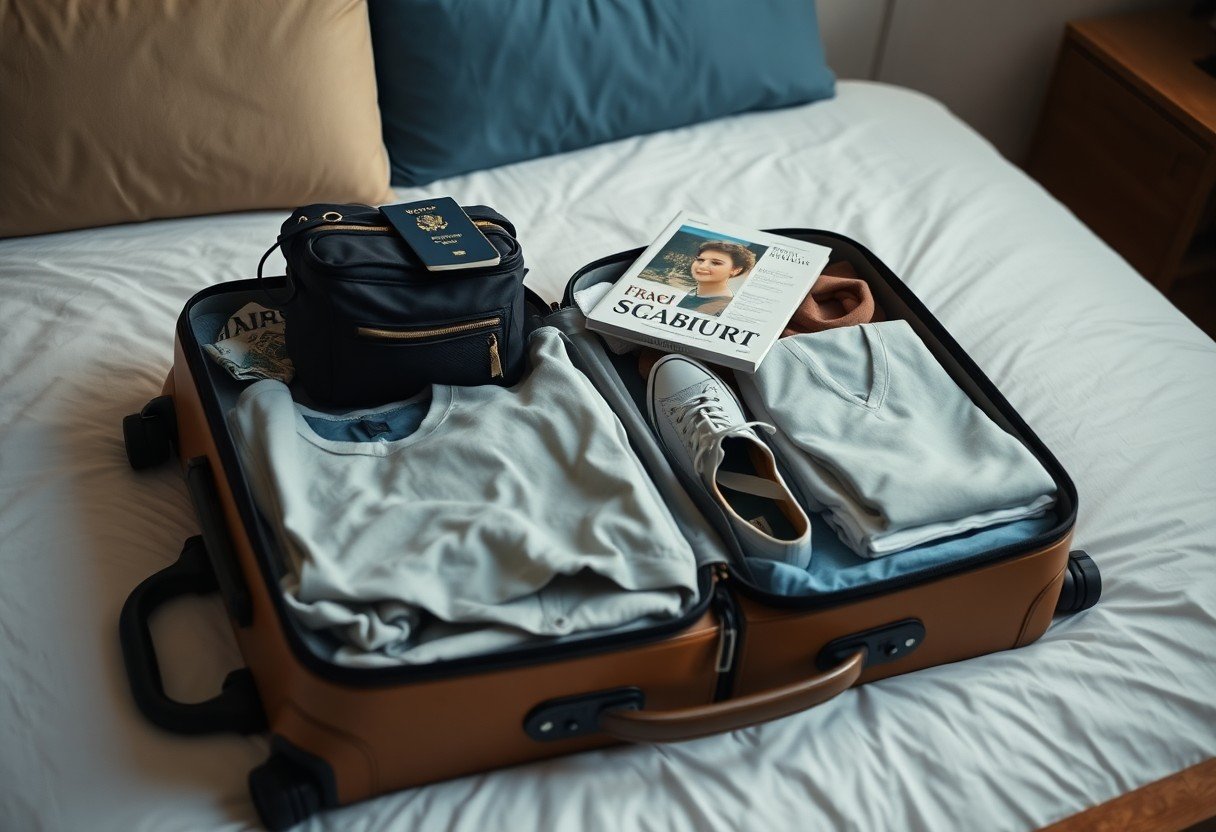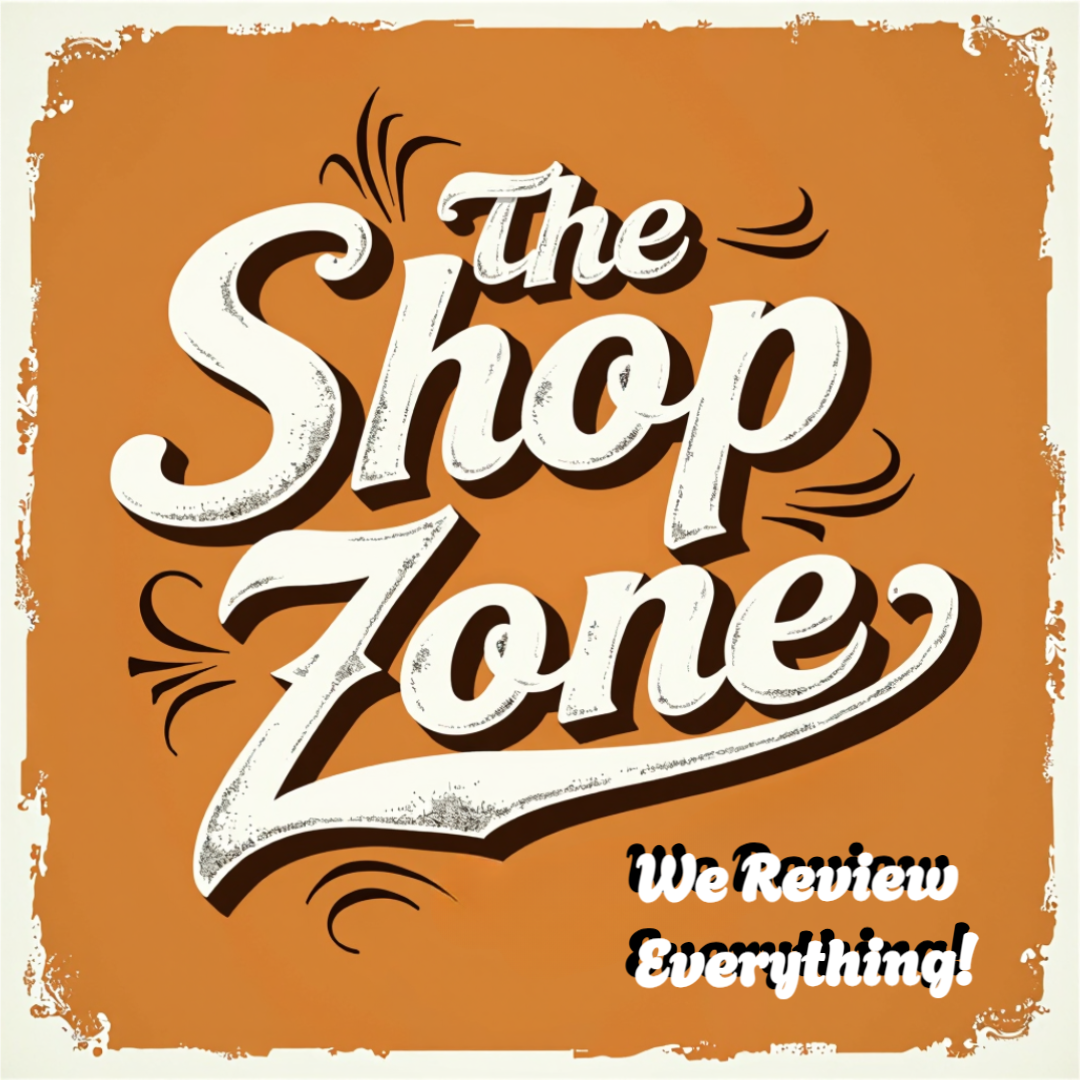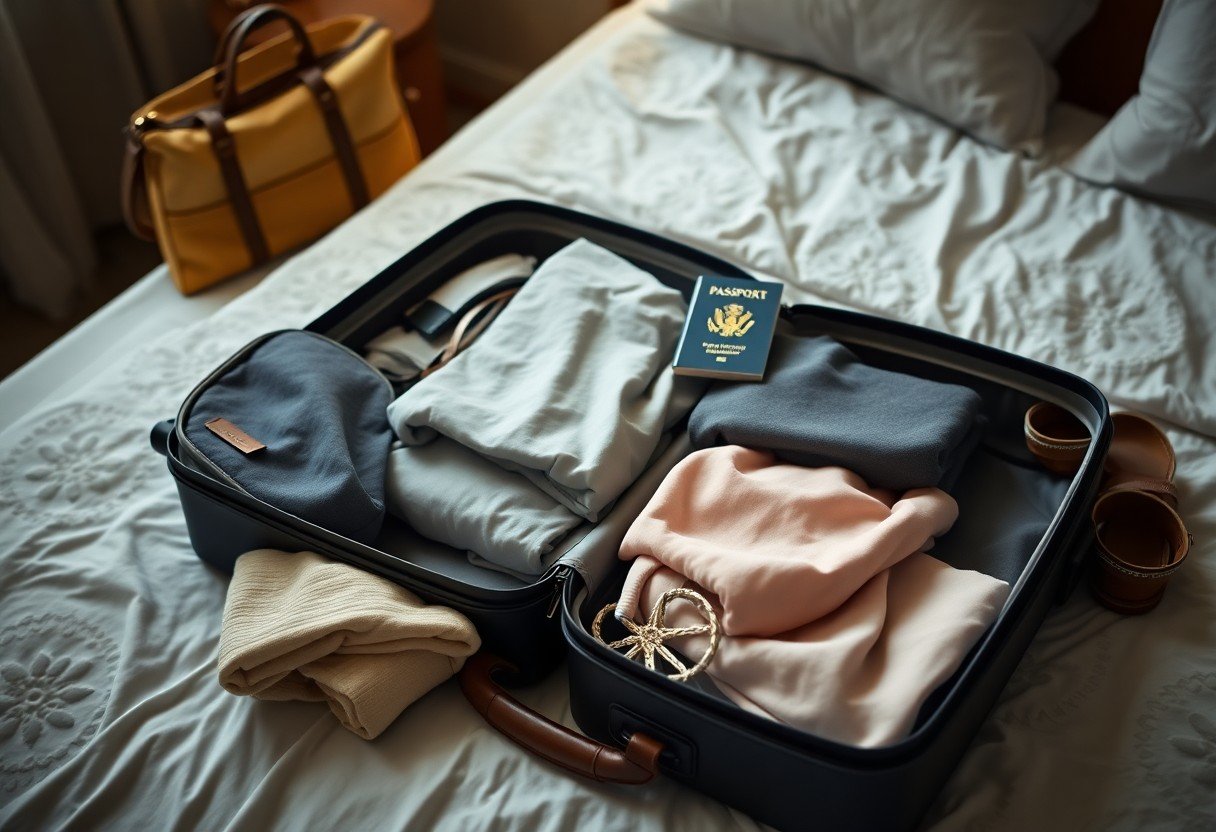Tips for travelling don’t have to be overwhelming. With smart strategies, you can streamline your packing process and avoid potential headaches. Begin by creating a personalized checklist that reflects your unique needs and destination. Invest in packing cubes to organize items and maximize space in your luggage. Don’t forget to roll your clothes instead of folding them, which saves room and minimizes wrinkles. By adopting these practical techniques, you’ll find that packing doesn’t have to be a last-minute scramble, allowing you to focus on enjoying your trip.
Key Takeaways:
- Make a packing list before you begin to organize your items efficiently.
- Roll your clothes instead of folding to maximize space and reduce wrinkles.
- Utilize packing cubes to compartmentalize your belongings and make unpacking easier.
- Consider the “one bag” approach to limit your luggage and ensure you’re only taking necessarys.
- Check airline regulations for carry-on and checked baggage to avoid unexpected fees.
Types of Travel Bags
To ensure you have a seamless travel experience, it’s necessary to choose the right type of travel bag. Each bag serves a unique purpose and fits different travel styles. Below is a breakdown of common types of travel bags you should consider:
| Type of Bag | Key Features |
|---|---|
| Suitcases | Hard or soft-shell, wheels, and handle for easy transport |
| Backpacks | Hands-free, multiple compartments, suitable for hiking or urban travel |
| Duffel Bags | Flexible storage, detachable straps, perfect for short trips |
| Rolling Bags | Combination of suitcase and backpack features, easy mobility |
| Purses/Daypacks | Compact, ideal for day outings, personal items access |
Knowing the right type of bag for your travels can significantly enhance your packing efficiency and overall journey.
Suitcases
Even though suitcases have been around for years, their designs have evolved to meet modern travel needs. They come in various sizes, from carry-on to large checked luggage, making them versatile for any trip. The best suitcases feature durable exteriors and low-maintenance materials, ensuring they can withstand the wear and tear of frequent travel. Look for those equipped with wheels and a telescopic handle for excellent maneuverability, especially in bustling airports.
Additionally, many suitcases now include expandable compartments for extra packing space and organized interior compartments to keep your belongings neatly arranged. Consider the weight factor, as lighter suitcases help you avoid overages with airline baggage restrictions. Ensure your suitcase aligns with your specific travel plans, whether it’s for business or pleasure, as your choice can greatly impact your overall travel experience.
Backpacks
With a vast array of styles and functionalities, backpacks have become a popular choice for travelers seeking flexibility and convenience. They are especially favored among those who prefer hands-free movement, which is beneficial in crowded spaces or when needing to navigate quickly through airports. A good travel backpack should include padded straps for comfort, various compartments for organization, and durability to withstand your adventures.
Backpacks provide an excellent balance of functionality and ease, particularly for day hikes or city exploration. They often feature water bottle holders, laptop compartments, and safety locks, keeping your needs in mind while on the go. This adaptability makes them ideal for both casual and adventurous travel alike.
Suitcases offer a structured method for packing, ensuring that your belongings remain in place during transit. However, backpacks present a formidable competition with their ability to adapt to various scenarios while providing you with mobility and comfort. When choosing between the two, consider your travel pattern and personal preferences, as both options are advantageous in their own right.
Essential Packing Tips
Even the most seasoned travelers can find packing daunting if they lack the right strategies. To ensure a smooth travel experience, you should adopt some imperative packing tips that save time and prevent stress. Here are a few suggestions to consider:
- Prioritize your packing list to include only necessary items.
- Utilize versatile clothing pieces that can serve multiple purposes.
- Invest in travel-sized toiletries to save space.
- Always leave room for souvenirs or unexpected purchases.
By applying these imperative tips, you can limit last-minute packing stress and enjoy a hassle-free departure. Thou deserve effortless travel experiences, and following these strategies will ensure efficient packing for your next adventure.
Rolling vs. Folding Clothes
Essential to your packing technique is deciding whether to roll or fold your clothes. Rolling clothes can maximize space in your luggage while reducing wrinkles, making it an excellent method for casual wear. This technique is especially effective for items like t-shirts and jeans, which can be easily rolled into compact forms. Alternatively, folding may serve better for formal or structured garments, ensuring they retain their shape during transit.
Understanding the nature of your clothing will help you decide which method is best for your specific needs. For instance, delicate fabrics like silk may fare better when folded properly, while thicker materials like cotton can often withstand the rolling technique without significant creasing.
Packing Cubes and Organizers
Essential for a tidy packing experience are packing cubes and organizers, which help you compartmentalize your items within your suitcase. By utilizing packing cubes, you can separate your clothes by category, such as tops, bottoms, and undergarments, making it easy to locate everything you need during your trip. Not only do they enhance organization, but they can also help compress your clothing, maximizing luggage space.
Tips for using packing cubes include choosing different colors for each category or family member, which not only gives a visual distinction but also reduces the time spent searching for specific items. You can also opt for packing cubes with compression zippers to enhance space savings. By implementing these organizational tools, you can significantly elevate your packing game, ensuring that everything you need is at your fingertips while traveling.
Step-by-Step Packing Process
All great trips start with effective packing strategies. A well-organized packing process can transform your travel experience, making it more enjoyable and less stressful. To help you along the way, 25 Expert Packing Tips for Amazing Trips can provide you with insights to streamline your journey. Following a simple step-by-step approach ensures that you will have everything you need while avoiding excess baggage.
| Step | Description |
|---|---|
| 1. Cold Weather vs. Warm Weather | Consider your destination’s climate to effectively choose appropriate clothing. |
| 2. Duration of Your Stay | Base your packing around how long you will be away, planning outfits accordingly. |
| 3. Activities Planned | Account for specific activities that may require special clothing or gear. |
| 4. Packing Method | Choose between folding, rolling, or using packing cubes to maximize space. |
Planning Your Outfits
The best way to pack efficiently is to start by planning your outfits for each day of your trip. Consider the climate and any scheduled activities while selecting versatile pieces that can be mixed and matched. This will not only ease the packing process but also keep you prepared for any surprises. Aim for layers—this allows you to adapt to varying temperatures and ensures you won’t need to overpack. Ultimately, choosing the right clothing will help facilitate a smooth and enjoyable travel experience.
Creating a Packing List
Planning your packing list ahead of time is a valuable aspect of being prepared for your trip. This list should include imperatives like clothing, toiletries, and any specific items required for your activities. Organization is key; categorize items to make sure you don’t overlook crucial belongings. Tailoring the list to your trip specifics will save you time and stress when it’s finally time to load your bags.
Your packing list should also be dynamic. After each trip, evaluate what you used frequently and what went untouched—this insight will help you craft a more effective packing strategy for your next excursion. Always update your list based on variations in destination, duration of stay, or other unique factors. By prioritizing this step, you will make the packing experience more manageable and set yourself up for a successful adventure.

Factors to Consider When Packing
Despite the excitement of traveling, the packing process can feel overwhelming. However, considering a few important factors can help streamline your preparation. Below are some elements to think about while you organize your belongings:
- Length of Trip
- Destination Climate
- Activities Planned
- Travel Style
After evaluating these factors, you’ll be well-equipped to pack for a seamless travel experience.
Length of Trip
Trip duration plays a significant role in determining what and how much you need to pack. If you’re launching on a weekend getaway, think about versatile outfits that can be mixed and matched, alongside a minimal number of personal items. For longer adventures, consider the destinations you’ll visit and the need for additional clothing or special gear, especially if your travels span a range of activities.
Destination Climate
Length of your trip also directly influences packing decisions; however, understanding the climate of your destination is equally important. Is it a tropical paradise or a chilly winter wonderland? Packing the appropriate attire, like breathable fabrics for warm climates or a warm coat for colder areas, ensures comfort during your journey.
Plus, take into account that climates can vary significantly even within a single region. Being aware of local weather conditions allows you to prepare accurately. For example, rainy weather may warrant a waterproof jacket, while a sunny destination might require sunscreen and hats. All these details play a vital role in ensuring your travel experience is as enjoyable as it is memorable.
Pros and Cons of Different Packing Methods
Not all packing methods are created equal, and choosing the right one for your travel needs can significantly impact your overall experience. Below is a comparison of various packing methods, outlining their advantages and disadvantages. This table can help you determine which approach best fits your travel style.
| Packing Method | Pros and Cons |
|---|---|
| Roll Packing | Pros: Maximizes space, minimizes wrinkles. Cons: Can be bulky if not done properly. |
| Fold Packing | Pros: Easier to access items, traditional method. Cons: Takes more space, potential for wrinkles. |
| Compression Packing | Pros: Saves significant space, keeps clothes organized. Cons: Can damage delicate fabrics, may require special bags. |
| Minimalist Packing | Pros: Lightens your load, encourages thoughtful packing. Cons: Might leave you short on crucials, especially for longer trips. |
| Layer Packing | Pros: Easy to create outfits, simplifies clothing selection. Cons: Can be heavy if too many layers are included. |
| Cube Packing | Pros: Organized and efficient, simplifies packing and unpacking. Cons: Bulky when not full, can be pricey for cubes. |
| Tech Packing | Pros: Keeps gadgets safe, designed for tech-savvy travelers. Cons: Adds weight and bulk, may not fit standard luggage. |
| Overpacking | Pros: More options for outfits, prepared for any situation. Cons: Difficult to carry, excess baggage fees. |
| Underpacking | Pros: Light and easy to travel, cheaper on luggage fees. Cons: Risk of forgetting crucials, limited outfit choices. |
| Seasonal Packing | Pros: Appropriate attire for each season. Cons: Requires knowledge of climate, can limit versatility. |
Minimalist Packing
An effective approach to packing is minimalist packing, which encourages you to bring only what you truly need. This method forces you to evaluate your travel crucials critically, allowing you to keep your luggage light and manageable. By focusing on fewer items, you not only free up space for souvenirs but also reduce the risk of overpacking and the stress of lugging around unnecessary weight during your travels.
Additionally, minimalist packing often fosters creativity in using your clothing and accessories. You can mix and match your items to create various outfits, ensuring versatility within a limited selection. This philosophy can significantly enhance your travel experience as you engage more fully in your journey rather than managing the burden of excessive belongings.
Overpacking vs. Underpacking
For many travelers, finding the balance between overpacking and underpacking can be a challenge. Overpacking can lead to a cumbersome travel experience, making it difficult to navigate airports or train stations, managing additional fees for luggage, and ultimately taking the enjoyment out of your journey. On the other hand, underpacking can leave you unprepared for unexpected situations, like sudden weather changes or special events that require specific attire.
Understanding how to strike this balance is crucial for a positive travel experience. It’s advisable to create a packing list tailored to your destination, season, and length of stay, ensuring you have enough crucials while avoiding the extraneous items that can weigh you down. Ultimately, finding your ideal packing strategy allows you to travel more confidently and with greater freedom.
Last-Minute Packing Hacks
After planning your travel itinerary and finalizing your accommodations, you might find yourself in a rush to get everything packed. To avoid any last-minute panic, consider integrating some effective packing hacks into your routine. For instance, you can create a checklist of items you can’t forget, prioritizing those imperative for your trip. For additional guidance on seamless packing, check out these Smart Packing Tips for Stress-Free Travel to refine your technique.
Quick-Access Items
There’s nothing worse than fumbling for your travel documents or toiletries when you’re racing against the clock. To streamline your packing, gather all quick-access items—passport, tickets, and chargers—and place them in a specific compartment of your backpack or carry-on. Designate a small travel pouch or a zippered pocket for these items, ensuring that they’re easy to grab during security checks or when boarding.
Travel-Sized Essentials
On your travels, opting for travel-sized imperatives can save you considerable packing space while keeping your luggage organized. Investing in durable, reliable travel-sized containers for your toiletries not only helps you adhere to airline liquid regulations but also allows you to carry your favorites without the bulk. Stocking up on the right items can improve your travel experience significantly.
This not only maximizes your travel efficiency, but it also enhances your trip by ensuring you have all necessary personal care products readily available. Consider your imperatives: shampoo, conditioner, moisturizer, and any medications. Keep them in a clear, resealable bag for easy visibility and access. This approach will free up more luggage space for your clothing and other imperatives, ensuring you can travel light without sacrificing your comfort.
Final Words
On the whole, implementing smart how-to travel tips for hassle-free packing can greatly enhance your travel experience. By organizing your belongings in advance, you can minimize the stress associated with packing at the last minute. Utilize packing cubes or compression bags to maximize space in your suitcase, and be sure to create a checklist tailored to your trip’s specific needs. This methodical approach ensures you bring only what you need, while also avoiding the tedium of overpacking.
Furthermore, consider rolling your clothes instead of folding them to save space and reduce wrinkles. Choosing versatile clothing items can also help you create multiple outfits with fewer pieces. By applying these strategies, you can make packing a seamless part of your travel preparations, allowing you to focus on enjoying your journey. Ultimately, effective packing leads to peace of mind, letting you concentrate on creating lasting memories during your adventures.




